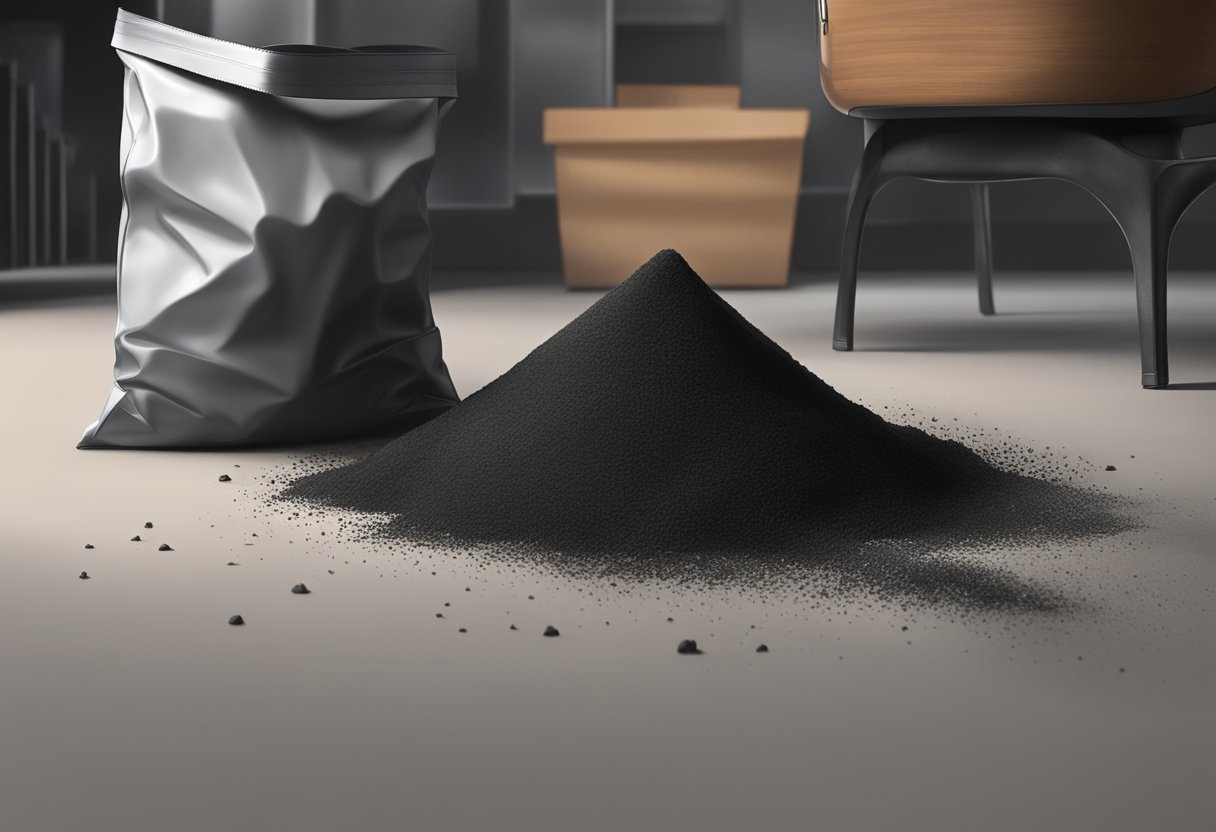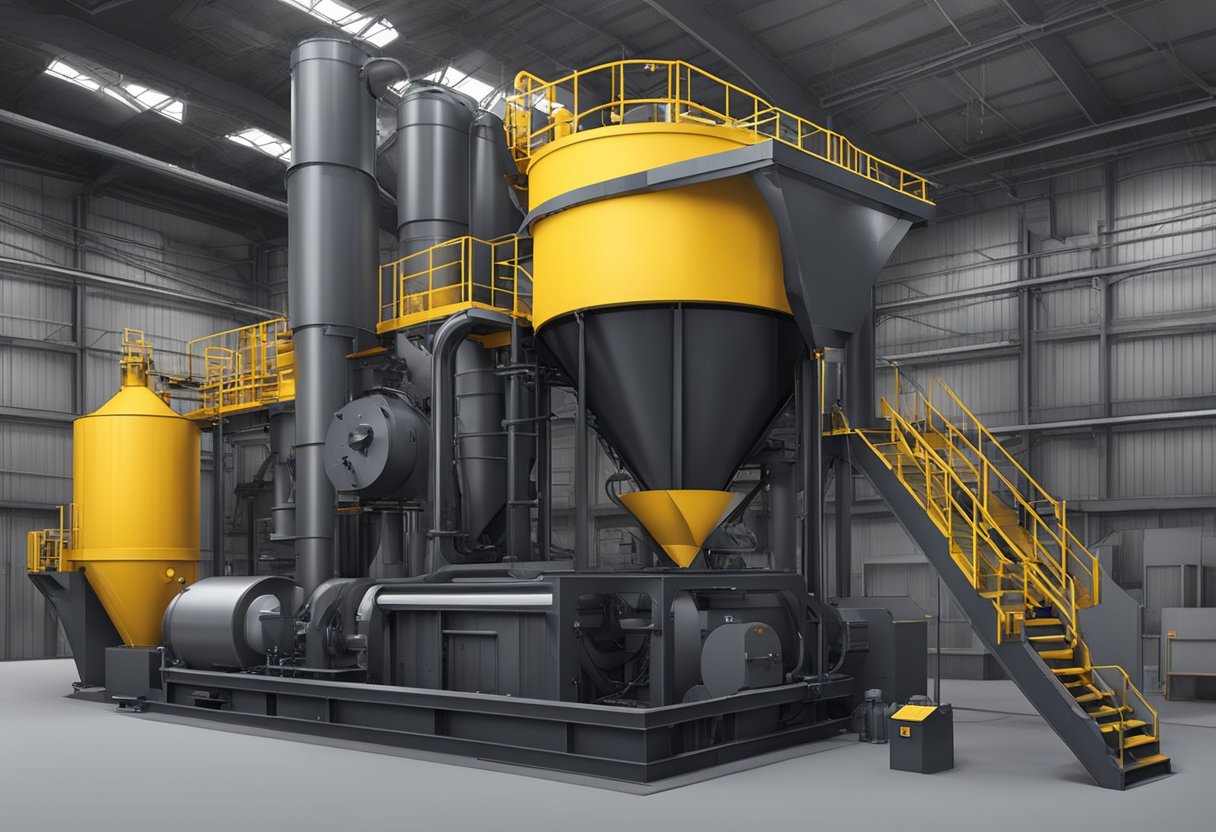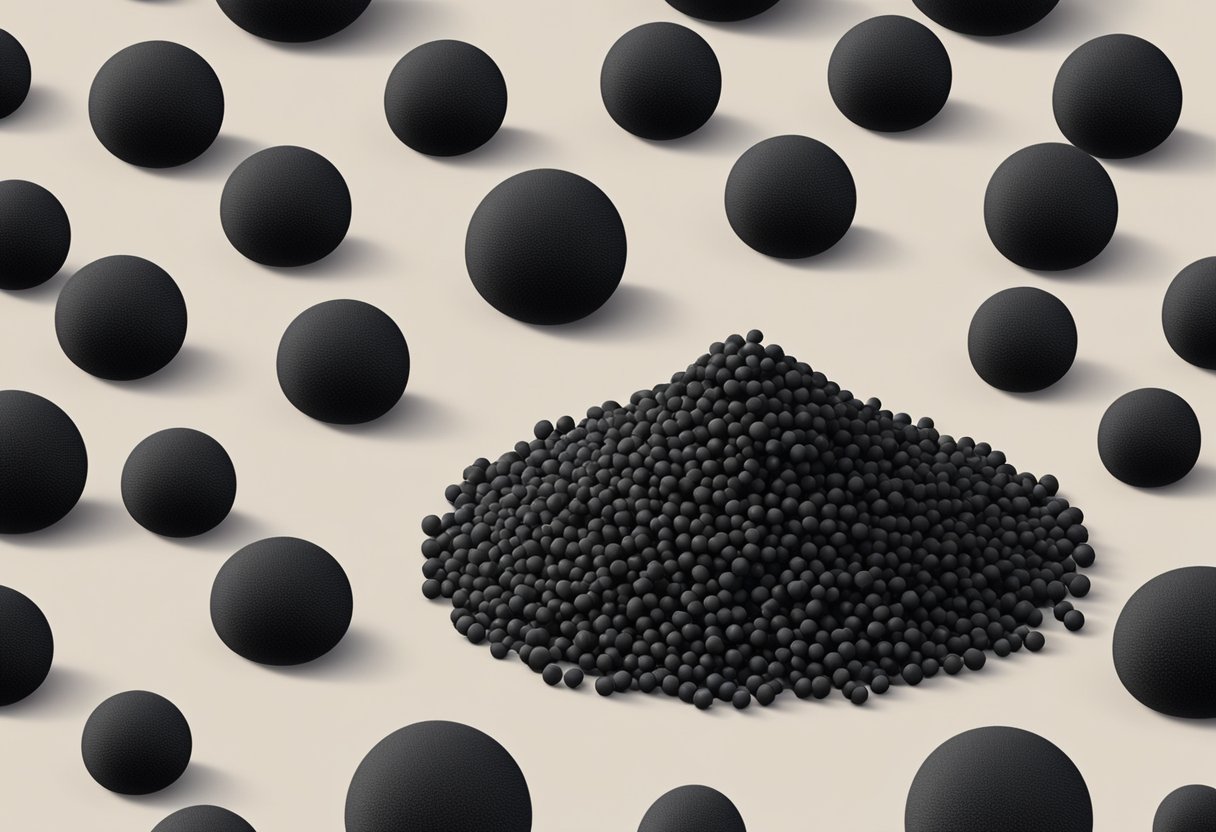Carbon Black N 550: Properties, Applications, and Benefits
19/01/2024
Carbon black N 550 is a type of carbon black that is commonly used in the manufacturing of rubber products. It is a high-performance reinforcing filler that is known for its excellent abrasion resistance, tear strength, and resilience. Carbon black N550 is produced by the partial combustion of heavy petroleum products, and it is characterized by its high surface area and low structure.

Rubber products that are made with carbon black N550 are known for their durability and resistance to wear and tear. This type of carbon black is commonly used in the production of tires, rubber hoses, belts, and other industrial rubber products. Carbon black resin N550 is also used in the production of plastics, inks, and coatings, where it provides color and UV protection. With its exceptional properties, carbon black N550 is a highly sought-after material in the rubber and plastics industries.
Chemical Composition of Carbon Black N 550

Carbon Black N 550 is a type of carbon black that is widely used in various industrial applications. Its chemical composition is mostly made up of carbon, but it also contains small amounts of other elements such as hydrogen, oxygen, and nitrogen.
The following table shows the typical chemical composition of Carbon Black N 550:
| Element | Content (%) |
|---|---|
| Carbon | 98.0 – 99.0 |
| Hydrogen | 0.1 – 0.5 |
| Oxygen | 0.1 – 0.5 |
| Nitrogen | 0.1 – 0.5 |
| Ash | 0.1 – 0.5 |
As shown in the table, Carbon Black N 550 has a high carbon content, which makes it an excellent conductor of electricity and a good reinforcement for rubber and plastic products. The small amounts of hydrogen, oxygen, and nitrogen in its composition also contribute to its unique properties.
Carbon Black N 550 is produced by the partial combustion of hydrocarbons, such as natural gas or oil, in a controlled environment. The resulting carbon black particles are then collected and processed to remove impurities and improve their properties.
Overall, the chemical composition of Carbon Black N 550 makes it a versatile and valuable material for various industrial applications.
Production Process of Carbon Black N 550

Furnace Black Process
The furnace black process is a commonly used method for producing carbon black N 550. In this process, hydrocarbons are burned in a furnace with limited air supply to form carbon black. The furnace is typically a large cylindrical vessel made of steel with a refractory lining. The hydrocarbons are introduced into the furnace through a burner located at the bottom of the vessel.
The furnace temperature is carefully controlled to ensure complete combustion of the hydrocarbons and the formation of carbon black. The process also involves the use of quenching water to cool the carbon black particles and prevent further combustion. The resulting carbon black N 550 is then collected and processed further to remove impurities.
Thermal Black Process
Another method for producing carbon black N 550 is the thermal black process. In this process, natural gas or oil is burned in a combustion chamber to produce a hot gas stream. This gas stream is then passed through a reaction chamber where it reacts with air to form carbon black.
The thermal black process involves the use of a highly controlled environment to ensure the formation of high-quality carbon black. The process is also highly energy efficient, making it a popular choice for large-scale production.
In conclusion, the production process of carbon black N 550 involves the use of either the furnace black process or the thermal black process. Both methods involve careful control of temperature and environment to ensure the formation of high-quality carbon black. The resulting carbon black is then processed further to remove impurities before it is used in various applications.
Physical Properties of Carbon Black N 550

Carbon Black N 550 is a commonly used reinforcing filler in tire and rubber manufacturing. This section will outline the physical properties of Carbon Black N 550.
Particle Size and Shape
Carbon Black N 550 has a primary particle size of approximately 20-30 nm and an aggregate size of 80-100 nm. The particles are spherical in shape, which contributes to their reinforcing properties. The small particle size allows for high surface area and good dispersion in rubber compounds.
Surface Area and Structure
The surface area of Carbon Black N 550 is approximately 50-60 m²/g. The high surface area allows for strong interaction with rubber molecules, resulting in improved reinforcement. The structure of the carbon black particles is composed of graphitic layers, which contribute to the high surface area and reinforcing properties.
Density and Color
The density of Carbon Black N 550 is approximately 1.8 g/cm³. The color of the carbon black is black, providing good coloration and UV protection in rubber compounds.
In summary, Carbon Black N 550 is a reinforcing filler with a small particle size, high surface area, and graphitic structure. Its properties contribute to improved reinforcement and coloration in rubber compounds.
Applications of Carbon Black N 550
Rubber Reinforcement
Carbon Black N 550 is widely used as a reinforcing agent in the rubber industry. It enhances the physical properties of rubber, such as tensile strength, abrasion resistance, and tear resistance. It is commonly used in the production of tires, belts, hoses, and other rubber products.
Plastics Pigmentation
Carbon Black N 550 is also used as a pigmentation agent in the plastics industry. It provides a deep black color and excellent UV resistance to plastics. It is commonly used in the production of pipes, cables, films, and other plastic products.
Coatings and Inks
Carbon Black N 550 is used as a pigment in coatings and inks to provide a deep black color and high opacity. It is commonly used in the production of automotive coatings, industrial coatings, and printing inks.
Overall, Carbon Black N 550 is a versatile material that finds applications in a wide range of industries due to its excellent physical and chemical properties.
Market Overview for Carbon Black N 550
Carbon Black N 550 is a type of carbon black that is widely used in various industries such as rubber, plastics, and coatings. It is produced by the partial combustion of hydrocarbons and is characterized by its high surface area, low tinting strength, and excellent dispersibility.
The global market for Carbon Black N 550 is expected to grow at a moderate pace in the coming years. The growth is mainly driven by the increasing demand for rubber products in the automotive industry, as well as the rising demand for plastics in various applications such as packaging, construction, and electronics.
Asia Pacific is the largest market for Carbon Black N 550, accounting for a significant share of the global market. The region is expected to continue its dominance in the coming years, owing to the growing demand for rubber products in countries such as China, India, and Japan.
In terms of application, the rubber industry is the largest consumer of Carbon Black N 550, followed by the plastics industry. The demand for Carbon Black N 550 in the rubber industry is driven by the increasing demand for tires, while the demand in the plastics industry is driven by the growing demand for high-performance plastics.
Overall, Carbon Black N 550 is a versatile and widely used material with a growing market. Its unique properties make it an essential component in various industries, and its demand is expected to continue to grow in the coming years.
Regulatory Compliance and Standards
Carbon black N550 is a widely used industrial material that is subject to various regulations and standards. Manufacturers and users of this material must comply with these regulations to ensure safety and environmental protection.
One of the primary regulations that apply to carbon black N550 is the Registration, Evaluation, Authorization, and Restriction of Chemicals (REACH) regulation. This regulation requires companies to register their chemical substances with the European Chemicals Agency (ECHA) and provide information on their properties, uses, and potential risks to human health and the environment.
Carbon black N550 is also subject to the European Union’s Classification, Labeling and Packaging (CLP) Regulation, which sets standards for the classification, labeling, and packaging of hazardous substances. This regulation requires manufacturers to provide clear and accurate information about the potential hazards of their products, including any health or environmental risks.
In addition to these regulations, carbon black N550 must also comply with various industry standards, such as ASTM International’s Standard Specification for Carbon Black N550. This standard provides guidelines for the physical and chemical properties of carbon black N550, as well as its applications and testing methods.
Overall, regulatory compliance and standards are an essential aspect of the production and use of carbon black N550. By adhering to these regulations and standards, manufacturers and users can ensure that this material is used safely and responsibly, with minimal impact on human health and the environment.
Environmental Impact and Sustainability
Carbon black N 550 is produced from the incomplete combustion of petroleum products such as heavy oil and coal tar. The production process of carbon black N 550 has the potential to emit pollutants such as CO2, NOx, and SOx, which contribute to climate change and air pollution. Therefore, it is crucial to evaluate the environmental impact of carbon black N 550 and ensure its sustainability.
To reduce the environmental impact of carbon black N 550, manufacturers have implemented various measures. For example, many manufacturers have invested in energy-efficient technologies to reduce their energy consumption and emissions. They have also implemented waste reduction programs to minimize waste generation and promote recycling.
Carbon black N 550 is considered a sustainable material because it can be recycled and reused in various applications. For instance, it is used as a reinforcing agent in rubber products, as a pigment in plastics, and as a conductive filler in electronic components. By using recycled carbon black N 550, manufacturers can reduce their environmental impact and conserve natural resources.
In addition, carbon black N 550 has a long lifespan, which reduces the need for frequent replacements and minimizes waste generation. Its durability and resistance to weathering make it suitable for outdoor applications, such as in tires and coatings.
Overall, while carbon black N550 has the potential to contribute to environmental problems, its sustainability can be improved through the implementation of energy-efficient technologies, waste reduction programs, and recycling initiatives. Its durability and long lifespan also make it a sustainable material for various applications.
Storage and Handling Guidelines
Carbon black N550 is a fine powder that requires careful handling to prevent dust formation and minimize the risk of explosion. The following guidelines should be followed for safe storage and handling:
- Store carbon black N550 in a cool, dry, and well-ventilated area to prevent moisture absorption and degradation.
- Keep the material away from sources of heat, sparks, and flames, as it can ignite and cause a fire or explosion.
- Carbon black N550 should be kept in its original packaging or in a clean, dry, and tightly sealed container to prevent contamination and exposure to air and moisture.
- When handling the material, wear appropriate personal protective equipment, including gloves, goggles, and a dust mask, to avoid skin and eye irritation and inhalation of dust.
- Use a dust collection system or vacuum to clean up any spills or dust accumulation, and dispose of the material in accordance with local regulations.
By following these guidelines, the risk of accidents and exposure to carbon black N550 can be minimized, ensuring a safe and efficient handling of the material.
Global Supply Chain and Distribution
Carbon black N550 is a widely used industrial material that is produced and distributed globally. The global supply chain for carbon black N550 involves multiple stages, from raw material sourcing to final product distribution.
The raw materials used to produce carbon black N550 are typically obtained from petroleum refineries. The carbon black is produced by burning heavy petroleum products in a controlled environment, which produces a fine powder that is then processed and packaged for distribution.
The distribution of carbon black is typically handled by large chemical companies that have established global supply chains. These companies have warehouses and distribution centers located in strategic locations around the world, allowing them to quickly and efficiently transport the product to customers.
In addition to the large chemical companies, there are also smaller distributors that specialize in carbon black N550. These distributors typically have a more limited distribution network, but they can often offer more specialized services and products to their customers.
Overall, the global supply chain for carbon black N550 is well-established and efficient, with multiple companies and distributors working together to ensure that the product is readily available to customers around the world.
Research and Technological Advancements
Carbon black N550 is a widely used reinforcing filler in the rubber industry, known for its superior physical properties. Over the years, extensive research and technological advancements have been made to improve the quality and performance of carbon black.
One of the key areas of research has been to optimize the production process of carbon black N550. The use of advanced process technologies has led to the development of high-quality carbon black N550 with improved properties such as higher surface area, lower particle size, and better dispersion.
Another area of research has been to explore the use of alternative feedstocks for the production of carbon black N550. This has led to the development of sustainable production methods that use renewable raw materials, reducing the environmental impact of carbon black production.
Research has also been focused on the use of carbon black in various applications. The incorporation of carbon black N550 in polymer composites has been found to enhance their mechanical properties, such as tensile strength and modulus. Similarly, the use of carbon black in tire manufacturing has been found to improve the durability and performance of tires.
In conclusion, ongoing research and technological advancements have led to the development of high-quality carbon black N550 with improved properties and sustainable production methods. The use of carbon black N550 in various applications has also been found to enhance the performance of the end product.
Frequently Asked Questions
What are the typical applications for Carbon Black N550?
Carbon Black N550 is a versatile reinforcing agent that is used in a wide range of applications. It is commonly used in the production of tires, rubber products, and plastics. It is also used in inks, coatings, and other industrial applications.
How does N550 Carbon Black compare to other grades like N220, N330, or N660?
Carbon Black N550 has a higher structure than N220 and N330, which makes it more suitable for reinforcing rubber compounds. It has a lower surface area than N660, which makes it less suitable for applications where high surface area is required.
What are the primary specifications for Carbon Black N550?
The primary specifications for Carbon Black N550 include particle size, surface area, structure, and tinting strength. The typical particle size range is 20-50 nm, the surface area range is 35-45 m2/g, and the structure range is 70-80. The tinting strength is typically 115-125% of the ASTM reference.
Can you provide current pricing trends for Carbon Black N550?
The pricing for Carbon Black N550 can vary depending on the supplier and the quantity ordered. It is recommended to contact suppliers directly for current pricing information.
What safety considerations should be taken into account when handling Carbon Black N550?
Carbon Black N550 is a fine powder that can be a respiratory irritant. It is important to use appropriate personal protective equipment, such as a dust mask, when handling this material. It should also be stored in a dry, well-ventilated area away from sources of ignition.
How is Carbon Black N550 produced and what are its physical properties?
Carbon Black N550 is produced by the incomplete combustion of hydrocarbons. It is a fine powder that is black in color and has a relatively low density. It has good dispersibility and is compatible with a wide range of polymers. Its physical properties include high abrasion resistance, good tensile strength, and excellent reinforcing properties.




